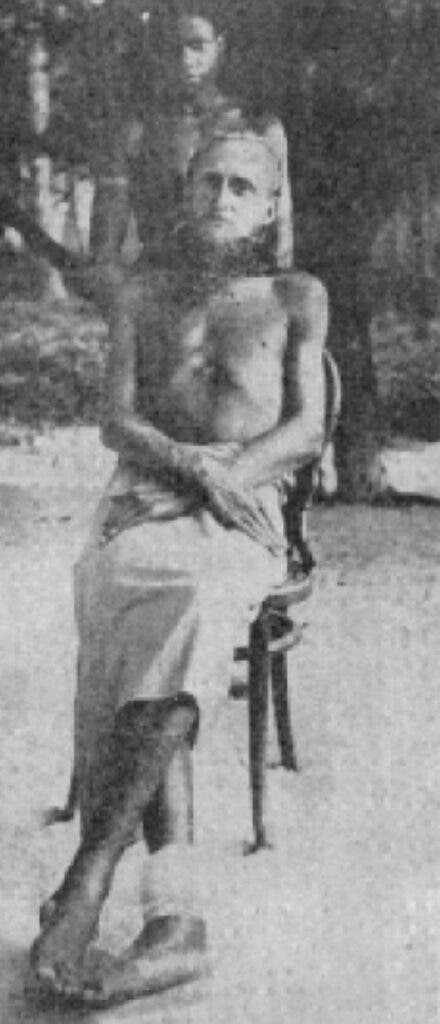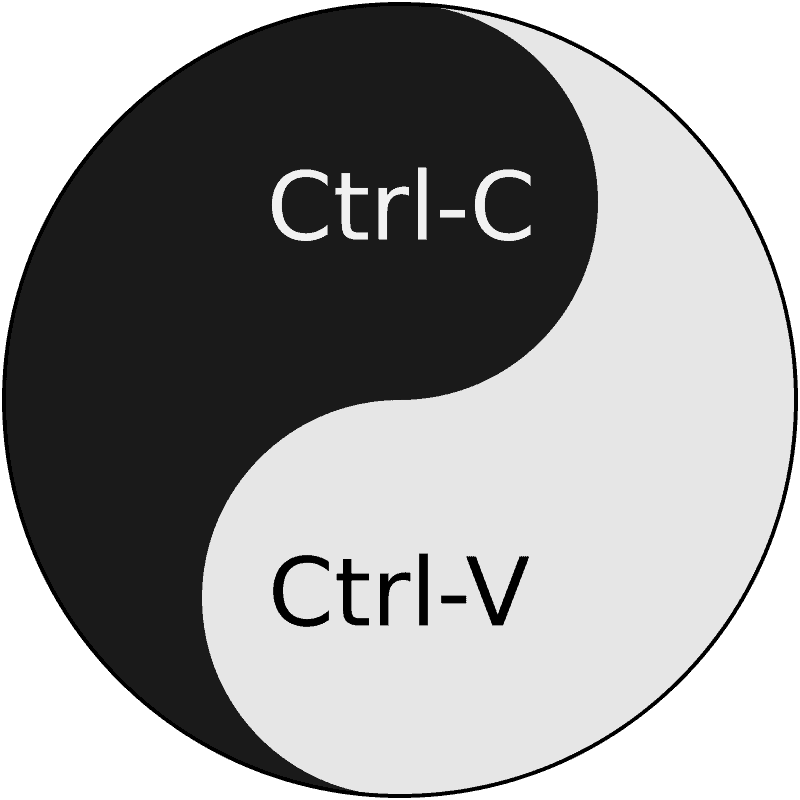There are some 7.7 billion people on the planet, and some of them have a few weird ideas about what’s going on in the universe. Here are some of them.

Universal Medicine — Esoteric breast massages
“Let me cure you by massaging your breasts” seems hard to take seriously, but this is an important part of what Universal Medicine teaches.
The cult was founded by Serge Benhayon, a former bankrupt tennis coach from New South Wales (NSW), Australia. Benhayon has no medical qualifications and claims that while he was on the toilet, he received an “energetic impress” and started the cult as a result.
From there to “esoteric heals everything” was just a step, apparently. The ‘esoteric breast massage’ (EBM) programs are claimed to heal everything from painful periods to breast cancer — claims which, of course, are ludicrous. Here is just one example of their philosophy (which has since been removed from their website):
“The breasts are emanators of a quality of DIVINE TRUTH that begins at the heart. The heart in connection to the pubic bone chakra, which is aligned to the ovaries, brings the emanation of nurturing out for all to have”.

Unsurprisingly, it turns out that the “healers” (and Benhayon himself) are, well… creeps. A NSW Supreme Court jury found that he leads a “socially dangerous” and “socially harmful cult”, “intentionally indecently touched” clients and “is a charlatan who makes fraudulent medical claims”. In a British court ruling, Universal Medicine was found to be “a cult with some potentially harmful and sinister elements”.
Happy Science — Mindfulness, spirituality, and invading China
Happy Science is one of the surprisingly numerous weird Japanese cults. The movement was started in 1986 by Ryuho Okawa, who claims to be the reincarnation of the “Supreme Being” — El Cantare, the “Lord of All Gods”.
Members of the cult believe El Cantare was born 330 million years ago and was worshipped at different times in human history as Odin, Jesus, Osiris, Hermes, Buddha, and the Hebrew Elohim. Okawa’s current wife is thought by believers to be the reincarnation of the goddess Gaia (the Mother Earth), while his previous wife was claimed to be the reincarnation of the goddess Aphrodite, but she has since been expelled from the cult.

The group claims to have 30 million members, although estimates put the figure closer to a few tens of thousands. Teachings are based on 500 books published by Okawa, most of which are transcripts of his recorded lectures. There are also 15 films based on his teachings.
Happy Science is a weird mixture of things. They believe in the existence of reincarnation, but also angels, demons, and aliens. They only ask believers to have the “aspiration and discipline to seek the truth and actively contribute to the realization of love, peace and happiness on Earth.” But things get a bit weirder when it gets to the group’s stance on foreign policy. They seem to love everyone… except China and North Korea.
Members of the group believe that North Korea and China are plotting to take over Japan using nuclear weapons. So instead, Japan should act preemptively and start an expansion. Happy Science wants to change the country’s constitution and remilitarize it as quickly as possible. Their political ambitions are no joke: the Happiness Realization Party, the cult’s official party has 21 local councilors in Japan and wants much more.
The group’s nationalistic ideas have become better defined in recent years, and they also started media campaigns supporting Donald Trump and the US far-right, working to build anti-China animosities. In the pandemic, the group sold “spiritual vaccines” that claimed to prevent and cure COVID-19 — for a cost, of course.
The August Engelhardt Coconut-Obsessed Cult
In 1902, a man by the name of August Engelhardt set out on a bizarre trip. Armed with inheritance money, a suitcase full of books, and the knowledge he gained by studying physics and pharmacy, he set out to reach the shores of Papua New Guinea. His goal? Establishing a new Edenic order.

He believed that man was a tropical creature, and if ever there is a garden of Eden, it should be inside the tropics, as close to the Equator as possible. He also believed that man was supposed to walk around nature freely — naked, preferably.
Engelhardt had previously engaged in a movement called Jungborn (“Fountain of Youth”), which advocated a return to the natural world, eating off the land, and living nude. The movement eventually fell apart because of legal problems regarding nudism, but Engelhardt didn’t give up on the idea.
He arrived on Kabakon island, a place known for its headhunters. He also seemed to have a weird fascination with coconuts. The main reason appears to be his shape. Engelhardt saw that the coconut was round like the human head and even resembled it a bit — so it must be the ideal fruit for man’s consumption. So central was this idea to Engelhardt’s cult that his diet and that of his followers (though there were only a handful of them) consisted almost entirely of coconuts.
“We can expect from God that he created our food in the shape of our heads,” Engelhardt reasons in one of his writings. They are “vegetal human heads, and they alone are the proper human nourishment.”
The coconut is also the fruit that grows nearest the sun, and Engelhardt also worshipped the sun, so he decided it must be the most perfect food for people. A New York Times article from October 15, 1905 wrote that “His plan was to have his sect worship the sun. He held that man was a tropical animal, not intended to live in caves called houses, but to wander, as Adam did, with the sun beating upon him all day and the dews of heaven for a mantle at night. Living such a life, he believed that the healing and curative powers of the sun would in time render a man so immune that sickness could be overcome”.
But sickness was not overcome.
Engelhardt and his fifteen or so followers would spend their days basking in the sun, swimming in the Pacific Ocean, and eating their coconuts. But life wasn’t easy. Several of his followers didn’t even survive a year on the island. Engelhardt himself became ill after a poor coconut harvest. He recovered but was reportedly very thin and in poor health. His writing became more and more erratic year after year, and he didn’t make it to his 50s.
His cult also didn’t last, but it’s not hard to consider Engelhardt a precursor of the hippie movement, and given the impact the movement has had on the world, he may feel a little vindicated.
Raëlism — possibly the largest UFO religion

So here’s the thing. Humans were created by aliens called the Elohim. The Elohim are not gods, but they are sometimes mistaken to be. The Elohim have also created forty Elohim-human hybrids to serve as providers — including Buddha, Jesus, Muhammad, and Raël — a former French journalist who founded and currently leads the Raëlian Movement.
That’s the core idea behind Raëlism, but it gets even more interesting. The movement believes that since the Hiroshima bomb of 1945, humans are inching closer to the apocalypse, and if we manage to avoid this and achieve world peace, the Elohim will return to Earth with their technology and begin a utopic age on Earth. They’re even working to build an embassy for the Elohim.
Like any respectable neo-religion, the Raëlian Movement encourages meditation, mindfulness, and sexual experimentation. However, researchers have noted that the movement has a coherent worldview and Raël himself appears to genuinely believe the truth behind his claims. The movement’s beliefs are generally considered as “progressive” and “hedonistic”, although members are advised against using recreational drugs or stimulants.

The movement, which counts some 60,000 members, is anti-war but sometimes opts for surprising positions. For instance, they support the introduction of genetically engineered plants, a position opposite to that of most new-age movements.
The John Frum cargo cult — in John they trust
John Frum is a classic example of a cargo cult. To get into the vibe of cargo cults, think of it this way: you’re an indigenous population from some Pacific archipelago. Modern science and technology is largely unknown to you. So when, unbeknownst to you, a global war breaks out (World War II), and some faraway people (mostly the Americans) send planes and other things your way, it’s not hard to see it as a divine wonder.

Hundreds of thousands of American troops poured into Pacific islands over the course of WWII, and several cargo cults were spurred. It’s not just the appearance of soldiers and their wild technology, but the locals didn’t know where the strangers’ seemingly endless supplies came from. To some, it seemed like they were magically summoned from some nether place. So cults appeared — especially after the soldiers departed.
Since the indigenous wanted the soldiers to come back (as the soldiers often traded with locals and offered them supplies), they developed rituals. They prayed and built shrines, but that was just the start of it. They would mimic the day-to-day habits of soldiers, patrolling and performing parades. Some even built runways for the planes to return.
For the duration of the war, the soldiers returned — sometimes. So to the locals, it seemed like their rituals were bringing them back. But when the war ended, the soldiers didn’t come back anymore. Like the gods of myth, they disappeared. In time, many cargo cults also disappeared. But others endured, hoping that if they pray hard enough, if they wait long enough, and if they do the right things, their gods will return (does this sound familiar?).

Perhaps the most notable such cult is the John Frum, in the islands of Vanuatu. John Frum is depicted as an American WWII serviceman who brings wealth and prosperity to his followers. However, John Frum also seems to live in a volcano, is a spirit, knows everything, and is stronger than Jesus (Vanuatu was swept by Christianity). He wants people to return to their ancestral way of living, and oppose colonizers.
Believers see John Frum on special occasions, or sometimes when they consume kava — a species of the pepper plant and the local narcotic of choice. The island of Tanna, in particular, is where the belief thrives. The men consume kava every night at sunset in a place that is off-limits to women.
In 1957, the movement really took off, when the John Frum movement created the “Tanna army” — a non-violent, ritualistic society that organized military-style parades of men wearing a uniform consisting of white T-shirts that said “T-A USA” (Tanna Army USA).
A local village chief managed to visit the US in 1995. He was impressed by the immense wealth he saw, but also saddened by the pollution and poverty he saw in the country. He happily returned home. We don’t know who John Frum is, or even if he is a real person, and Americans have done little to help Vanuatu in the past 70 years. But if Christians have been waiting for Jesus for 2,000 years, why is waiting for John Frum any sillier?
Missionary Church of Kopimism — code is law

Kopimists have a rather unusual set of beliefs. The main underlying idea is that copying information is a sacred virtue and all information should be freely distributed and unrestricted. The group opposes any form of copyright or information hiding — all information must be freely available, always.
If that sounds a bit like the Pirate movement, well, some suspect the Kopimists of exactly that, especially since the two founders have been involved in online activism before. Some journalists have dismissed Kopimism as “a political adventure”, “a PR stunt”, and “a devaluation of religion” — but the group insists they’re the real deal. Their webpage reads:
A religion is a belief system with rituals.
The missionary kopimistsamfundet is a religious group centered in Sweden who believe that copying and the sharing of information is the best and most beautiful that is. To have your information copied is a token of appreciation, that someone think you have done something good.
- All knowledge to all
- The search for knowledge is sacred
- The circulation of knowledge is sacred
- The act of copying is sacred.
The group even holds weddings. In 2012, the Missionary Church of Kopimism held its first wedding in Belgrade, Serbia. The holy ceremony was conducted by a Kopimistic Op wearing a Guy Fawkes mask. A computer read the vows and some of the Kopimism’s central beliefs aloud. At the event, the church declared:
“We are very happy today. Love is all about sharing. A married couple shares everything with each other. Hopefully, they will copy and remix some DNA-cells and create a new human being. That is the spirit of Kopimism. Feel the love and share that information. Copy all of its holiness.”
It’s hard to say just how much truth is in that and how much is trolling, but at the very least, Kopimists came up with an idea that pushes the boundary of what religion and doctrine really mean — especially in the 21st century.
These are just some of the unusual groups out there. Of course, there are plenty more that are more dangerous and others that are just as (or maybe even more) weird. Did we miss anyone that should be on the list? Write in the comments!


